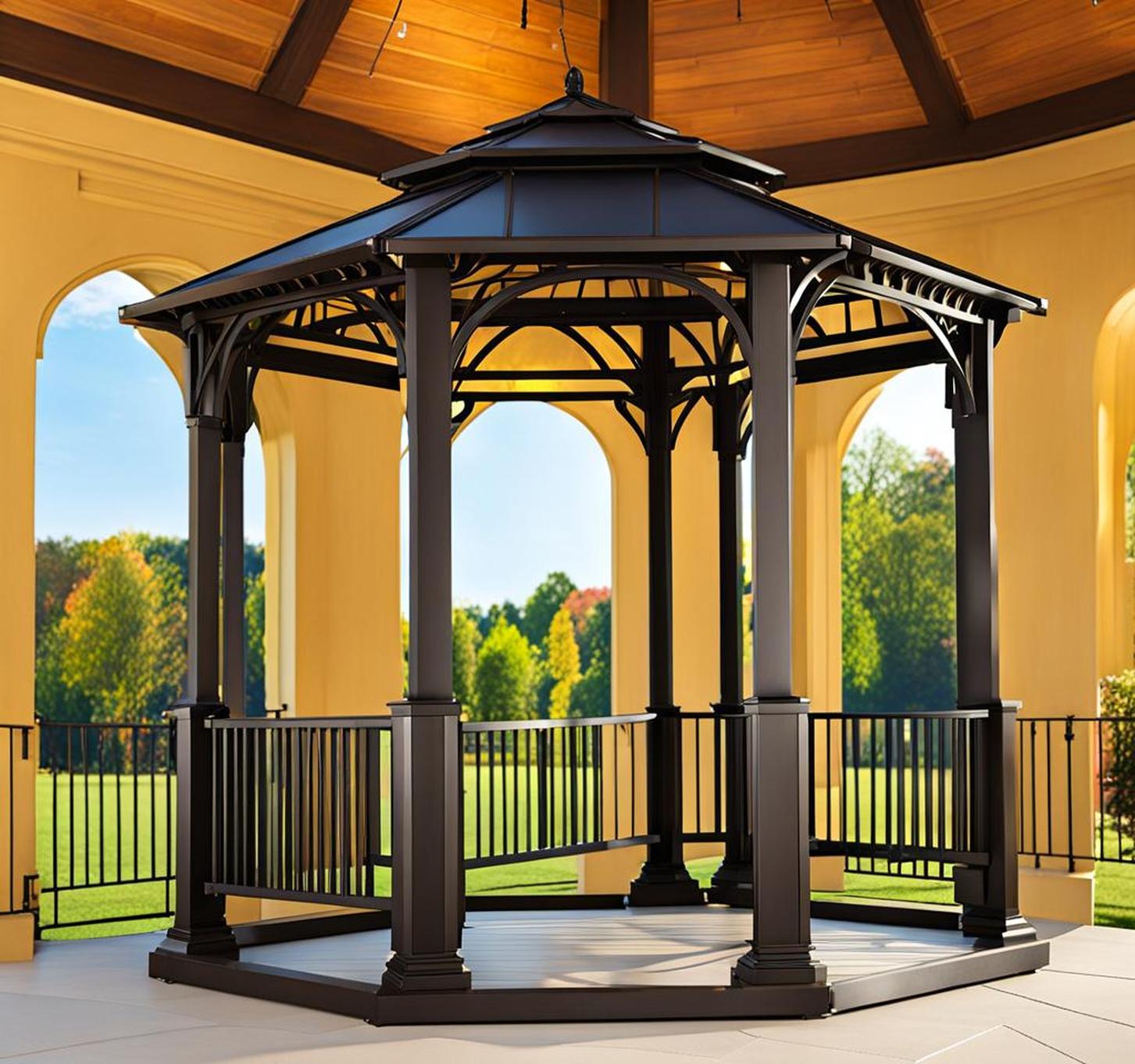A sturdy, well-anchored gazebo can be a wonderful addition to any outdoor space. But when you’re working with a large, heavy-duty gazebo with big square legs, you need serious gazebo weights capable of keeping the structure stable in wind and weather.
Inadequate anchoring leads to gazebo damage, collapse hazards, and runaway gazebos barreling across the yard. By understanding gazebo weight options and calculating the right counterbalance for your specific structure, you can secure your investment and keep friends and family safe.
Why You Need Heavy-Duty Weights for Large Gazebo Legs
Lightweight pop-up canopies can often get by with minimal weights or stakes to keep them in place. However, more permanent structures with square steel tubing legs require robust gazebo weights engineered for security.
Prevent Gazebo Damage or Collapse in Windy Weather
A large gazebo essentially acts as a giant sail when wind speeds pick up. The uplift pressure can warp and twist the frame, snap critical joints and welds, and peel back or shred the canopy fabric.
With enough sustained force, the entire structure can be lifted up, flipped over, and mangled or destroyed along with anything stored beneath it.

Provide Stability for Tall, Wide, Heavy-Duty Gazebos
Larger gazebos meant to cover and shelter bigger groups need abundant anchoring power. Tall designs with peaked canopies catch more wind load. Wider models also oppose more surface area to gusting winds.
Robust gazebo weights counteract the lever and lift forces placed on the legs, keeping the structure firmly planted.
Anchor Gazebo on Multiple Surfaces
Unlike small pop-up tents and canopies, durable metal gazebos get installed in many settings beyond grass and dirt. You may need to stabilize a large gazebo on a wooden deck, brick pavers, or concrete patio.
Quality weights provide grip and anchoring on all these surfaces without damaging or disrupting the material.
Choosing the Best Gazebo Weights
All gazebos weights serve the same basic purpose. But not all models provide enough ballast for larger structures while also standing up to outdoor exposure over time. Consider these key factors when shopping:
Weight Capacity
Aim for gazebo weights offering at least a minimum of 24kg per square leg. This provides ample counterbalance for taller and wider big-frame gazebos. Stackable designs allow using multiple weights per leg when extreme wind resistance becomes necessary.
Attachment Method
The best gazebo weights secure directly to the legs for maximum leverage. Models with built-in anchor points allow bolting or clipping weights in place. Adjustable straps also work to strap weights tightly against the legs.
Material
Durable cast iron and steel or solid concrete construction proves vital for permanent outdoor use. Seek out weatherproof coatings to limit rust and corrosion issues.
Cast Iron Gazebo Weights
Class heavy-duty cast iron models provide some of the most robust anchoring capabilities. Let’s examine the pros and cons of these popular gazebo weights.
Pros
- Very heavy – up to 24kg per individual weight
- Can stack multiple iron weights for additional anchoring
Cons
- More expensive initial purchase cost
- Fixed design offers less flexibility for placement
Concrete Weights
Poured solid concrete while not as heavy per unit as cast iron, allows more customization possibilities.
Pros
- Available in different shapes, sizes, and weights
- Often more affordable than cast iron models
Cons
- Difficult to link multiple concrete units together
- Prone to cracking and spalling over years of weathering
Gazebo Leg Strap Weights
This style gazebo weight uses adjustable straps to secure the weight against the leg. Leg strap models often allow filling with either sand or water.
Pros
- Secure adjustable straps attach easily to square gazebo legs
- Ability to fill with either sand or water
Cons
- Individual units weigh less than solid iron or concrete
- Straps may loosen or wear over time
Getting the Right Fit
In order for any gazebo weights to work correctly, take accurate measurements and do some quick calculations to buy the right size and amount.
Measure Your Legs
Use a tape measure to note the diameter or width of the square tubing legs along with the wall thickness. Also measure the height, accounting for however much leg gets embedded in the ground.
Calculate Total Needed Weight
With large gazebos, plan for at least a minimum 24kg per leg. Go higher for bigger or taller structures. Divide the total weight by the individual weight of your chosen anchors to see how many you need.
Securing Your Gazebo Weights
Merely plopping down weights by the legs alone won’t provide optimal stability. Take steps to securely integrate the weights into the gazebo structure.
Placement
Consider the ground surface material along with mowing and foot traffic around the gazebo. Position weights close to legs without creating tripping hazards.
Anchoring Methods
Use built-in attachment points, adjustable straps, bungee cords, or ratchet straps to interface weights with legs. Ground stakes also help lock weights firmly in position.
Keeping Weights Functional
Taking steps to maintain and care for your gazebo weights improves safety and extends useful lifespan.
Maintenance
Periodically check straps or cables for fraying and ensure hardware connections remain tight. Re-coat concrete anchors with fresh waterproofing as needed.
Storage
When not in use, store gazebo weights out of direct sun, rain, and snow. Avoid placing directly on damp ground.
A permanent heavy-duty gazebo deserves serious gazebo weights engineered specifically to handle wind forces placed on larger metal frames. While requiring some initial effort to calculate and install, quality anchors provide peace of mind and security for years.
Friends and family can enjoy tranquil afternoons no matter how hard the winds blow across the yard. And you’ll avoid the headaches and hazards posed by a runaway gazebo allowed to sail unrestrained across the great outdoors.
